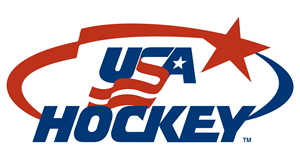Hockey 101
The Playing Surface
- The ice sheet is commonly known as the rink.
- The rink is divided into zones by a red line at center ice and two blue lines.
- A standard North American rink measures 200 feet by 85 feet.
- European ice surfaces are slightly larger.
- The ice is enclosed by boards and Plexiglass.
Rink “Zones”
- The ice surface is divided into three zones.
- The area where the goal net is located is the “defending zone” for the team defending that net.
- The middle of the rink, between two blue lines, is the “neutral zone.”
- The area where the opposing net is located is the “attacking zone” or “offensive zone.”
The Puck
- The puck is made of black, vulcanized rubber.
- A standard puck measures one inch thick and three inches in diameter, and weighs between 5.5 and 6 ounces.
- The puck can be moved with the hockey stick or the feet, but picking it up with the hands is illegal.
The Hockey Stick
- A stick is held by each player and used to retrieve, control, carry, pass and shoot the puck.
- Goals are scored by using the stick to shoot the puck into the opponent’s net.
- A shot that inadvertently deflects into the net off another player’s body is allowed to stand as a goal.
The Net
- A cage measuring four feet tall and six feet wide, strung with nylon mesh in the back.
- There are two nets at opposite ends of the ice, guarded by the goaltenders.
Teams
- Each team has six players on the ice, one goaltender and five “skaters”.
- The five “skaters” have assigned positions: three forwards and two defensemen.
Substitutions
- Substitutions are unlimited and can be made at any time.
- A substitution does not require an official’s permission, or a stoppage in play.
- A player can join the game “on the fly” – during the flow of play – if the departing player is within five feet of the bench and not involved in the play or with an opponent.
The Face-off
- The game begins when the referee drops the puck between two opposing forwards.
- During the face-off all other players are positioned on the defensive side of the puck.
- The face-off is used to resume play following any stoppage in the game.
- There are nine designated face-off spots painted on the ice.
The Game Clock
- The game is played in three 20-minute periods.
- The clock is stopped during all stoppages in play.
Body Checking
- A player can use a shoulder, hip or torso to hit or impede an opponent, but only when the opponent is in possession of the puck.
- A body check that targets the head is illegal.
- A body check to an opponent’s back is illegal if the opponent is facing the boards.
The Lingo
- Bar Down: When the puck hits the bottom of the crossbar and falls across the line for a goal.
- Barn-burner: A fast-paced, high-scoring, exciting hockey game.
- Bucket: Another term for helmet.
- “Celly”: Slang for “celebration” and refers to the expression of joy after a player scores a goal; a celly comes in many forms and can range from a fist pump to sheathing a stick as if it were a sword to belly-sliding across the ice. The degree of celly is typically correlated to the importance of the goal.
- Crease: Refers to the blue semi-circle directly in front of the net and goal line where the goaltender defends. Because the area is marked by blue paint, it is also referred to as “the paint.”
- Flex: A measure of stiffness when force is applied to a hockey stick. Flex rating indicates how many pounds of force are necessary to bend a stick one inch. The higher the flex rating, the stiffer the stick.
- Iron: The red pipes that comprise the frame of the net. If a puck deflects off this area it is said a player “hit the iron.”
- Natural Hat Trick: When a player scores three consecutive goals in a game; the slang term is “natty hatty.”
- Pylon: A player – typically a defenseman – that is extremely slow on the ice and the opposition can easily skate around.
- Saucer Pass: An elevated pass; typically used to evade an opposing player’s stick blocking the on-ice passing lane.
- Twig: Another term for a hockey stick that refers to the era when sticks were made from wood. Today’s sticks are made of carbon fiber and graphite, which are lighter, more flexible materials.
- Wheels: A player’s speed and skating ability. A fast and agile player has “good wheels.”
Oops!
You have unsaved elements
Please save or cancel the pending changes to the elements within your page and then try saving again.





